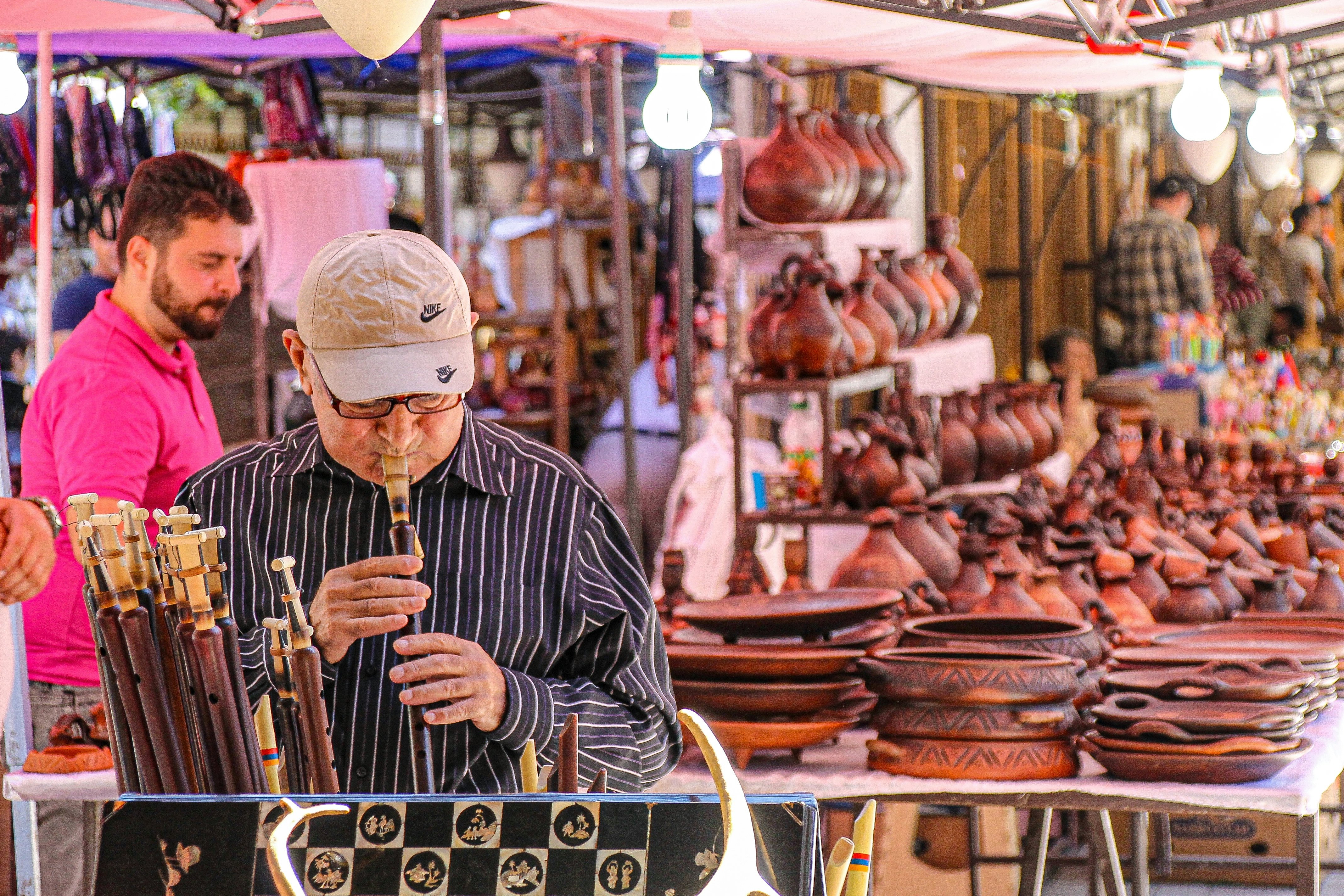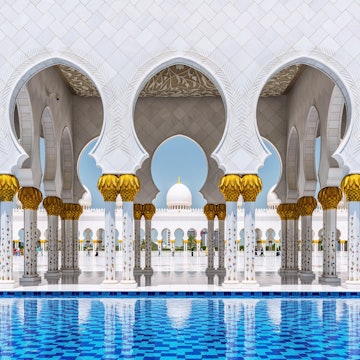
16 things you need to know before traveling to Armenia

Apr 16, 2025 • 8 min read

Hayravank Monastery on the shore of Lake Sevan. Mike Ilchenko/Shutterstock
Few nations have histories as ancient, complex and laced with tragedy as Armenia. And even fewer have a culture that is as rich and resilient. This is a destination where you will be intrigued by history, awed by monuments, amazed by the landscapes and charmed by the locals. It's not an easy place to explore – roads are rough, transport is often hard to navigate and those who don't speak Armenian or Russian may find communication a challenge – but travelling here is as rewarding as it is revelatory.
A trip to Armenia will inevitably involve plenty of monasteries, but increasingly, there are ways to mix things up. Hiking is one, with lots of freshly blazed trails. Another is exploring abandoned Soviet space telescopes, restored 19th-century buildings made from tuff (volcanic ash) and drinking wine with proud Armenians over a khorovats (barbecue) feast. Don't miss the unexpected delight of Yerevan – a city passionate about its art, its cafes and its restaurants, with a cuisine that stretches across the Armenian diaspora.
Put together, Armenia is an off-the-beaten-track destination that has no business being one. Here’s what you need to know before you go.

1. Know the best times to visit Armenia
Temperatures in April, May and June are very pleasant, perfect for enjoying a drink on a cafe terrace in Yerevan and going hiking in the mountains. In July and August, daytime temperatures can reach 40°C (104°F), but respite can be found in the form of the Vardavar water dumping festival and the indoor Golden Apricot International Film Festival.
September and October are popular months to visit due to mild temperatures, the harvest season in the countryside, and the Yerevan Jazz Fest. Temperatures between December and February can fall below -20°C (-4°F) so wrap up warm for winter trips.
2. Do you need a visa?
Citizens of the US, EU, UK, Switzerland, Australia and New Zealand are exempted from the requirement to have a visa to enter Armenia for stays of up to 180 days, Canadians, Israelis and South Africans are among those who need a visa.
You can view a full list of exempted countries online. If you need a visa, Armenia has an e-visa system, which offers visas for stays of up to 21 days (AMD2685/US$7) or up to 120 days (AMD13,000/US$34). Processing time is typically three days.
3. Check your travel insurance
Not all insurers cover Armenia as part of their normal coverage for Europe, and very few will cover you for travel along the borders with Iran and Azerbaijan. Check your policy and see what is permissible before you go.
Before leaving home, ensure that all your routine vaccination cover is complete. It’s wise to ask your doctor for an international certificate of vaccination, listing all the vaccinations you’ve received. EU citizens are entitled to free public medical and some dental care in Georgia, Armenia and Azerbaijan under reciprocal arrangements.
4. Is it possible to visit Azerbaijan too?
You cannot travel by land or air between Armenia and Azerbaijan directly, though you may connect through a third country like Georgia. Travelling to Azerbaijan with an Armenian stamp in your passport or vice-versa is not a problem, however you should definitely expect some questions from immigration officers.
In border areas, always be sure to ask permission before taking photographs – or better yet just keep the phone or camera packed away. There are periodic tensions between Armenia and Azerbaijan, so monitor local news reports and be cautious about visiting areas close to the border.

5. Skip the shorts if you’re traveling outside Yerevan
Many women in Yerevan like to dress well and sometimes go over the top (the Kardashians may have that quality in their DNA), but it is not necessary to follow suit. Men tend to dress more simply (as do women outside of Yerevan) – and both genders are rarely seen in shorts.
When visiting an Armenian monastery it is respectful to dress modestly – short skirts and bare shoulders are frowned upon. Women may consider covering their heads, but again, this isn't usually essential. It’s a good idea to pack a scarf just in case.
6. Stay in hotels, home stays and Airbnbs
The South Caucasus is very much in the grip of the boutique hotel craze, and the region has been busy building some truly incredible stays. Check out the excellent home-grown boutique hotels of the Tufenkian Heritage Hotels chain. If you do use certain short-term accommodation apps, learn to spot which properties are individual projects as opposed to multi-apartment businesses – choosing the former is a more responsible approach for booking accommodation in all European cities.
7. Learn how to catch a local bus
Marshrutky (shared taxis or minibuses) play a vital role in society in the Caucasus. Comfort and cleanliness vary wildly, but in many places, they are the only public transport available. Most buses leave only when full (leave something on your seat to indicate it's taken if you plan to wait outside). To hail a passing marshrutka, stick out your arm and wave. If you want to get off, say kangnek (meaning "stop") in Armenian.

8. Water fountains are everywhere
Across downtown Yerevan you'll find pulpulak (drinking fountains) constantly spouting crisp, clean water – so have a sip! If you're worried about your lips touching a spout where thousands of others have taken a drink that day, cover part of the mouth with your thumb to shoot it higher (and even into your water bottle). Outside the capital, there is little, if any, filtration of local tap water; some travelers choose to avoid taking the risk and buy bottled water, or pack purifying tablets.
9. BYO toilet paper
Public toilets are rare and may not have toilet paper, so it’s a good idea to carry some with you. It's generally bad form to flush toilet paper into the toilet as drains block easily – use the small bin provided. Where public toilets with attendants can be found you'll generally be in for a perfectly decent level of cleanliness. Those without on-site cleaners tend to be far rougher experiences.
10. Be aware of issues for LGBTIQ+ travel in Armenia
Homosexuality is legal in Armenia, but it remains a taboo subject. While Armenia voted in 2017 to accept same-sex marriage, this applies only to weddings held outside the country. LGBTIQ+ travellers shouldn't encounter problems if they are discreet. Culturally, two men or two women sharing a bed is a relatively normal thing, so it may raise fewer eyebrows than an unmarried man and woman doing the same.
The large number of young Russians from cities such as Moscow and St Petersburg relocating to the South Caucasus since Russia’s invasion of Ukraine in 2022 has impacted LGBTIQ+ visibility in the region and fueled increased tolerance among local populations.
11. Family travel in Armenia
Family is important here so you can be assured a very warm welcome wherever you go with kids. Locals love meeting children and are very relaxed with them. For the most part people will be extremely considerate towards travellers with children.
Children should be encouraged to avoid unfamiliar dogs or other mammals because of the potential risk of rabies and other diseases. Be aware that in the Caucasus, sheepdogs are not pets and can be dangerously fierce; they’re bred for fending off wolves, so be careful to keep kids at a good distance.

12. Respect important dates in Armenia’s history
As the Ottoman Empire was crumbling in WWI, many Armenians sought to establish their own nation-state or sided with Russia. Still seething from massacres by Christians in Bulgaria and in fierce opposition to Russia, the ruling Young Turks ordered the forced deportation of Armenians, leading to what's known as Medz Yeghern (the Great Crime) or the Armenian Genocide.
Türkiye argues against the word genocide on the basis that there's scant evidence of an official extermination order and that there were fewer than 1.5 million Armenians in the empire before WWI – arguments Armenians categorically deny. Armenian Genocide Remembrance Day is marked in Armenia on April 24, and it's an important day of remembrance for local people.
13. Be aware of border disputes such as the one in Nagorno-Karabakh
Nagorno-Karabakh (Artsakh to Armenians), a 4400 sq km chunk of land east of modern-day Armenia (and currently under Azerbaijani control, as of September 2023) has been inhabited by ancestors of both nations for centuries. As the USSR crumbled, the borders of the Nagorno-Karabakh region became the subject of a brutal conflict that lasted 32 years, leading to tens of thousands of deaths and accusations of ethnic cleansing on both sides.
The First Nagorno-Karabakh War erupted in 1991 when the territory's majority Armenian population voted to join Armenia. Some 30,000 were killed and a million were displaced. Armenia declared victory in 1994, though Nagorno-Karabakh was still internationally recognised as Azerbaijan. For nearly three decades, the conflict simmered until another war (2020–23) sealed its fate. Travelers are advised to stay away from areas close to this disputed territory.

14. Understand the impact of recent Russian migration
Yerevan has received an influx of Russian immigrants since the Russia–Ukraine War heated up, including young people fleeing conscription. Armenians complain that Russians have caused prices, especially for housing, to skyrocket and that Russian restaurant servers can't speak Armenian (though most Armenians speak Russian). But young Russians have also opened up hip new cafes, bars and restaurants all over Yerevan, and their risqué fashion styles and generally LGBTIQ-friendly attitudes are having an impact on conservative Armenia.
15. Be cautious about exploring abandoned buildings
Be conscious of the fact that there are internally displaced people (IDP) living in makeshift accommodation in parts of Armenia. This particularly applies to "urbexers" who enjoy exploring abandoned buildings. In Armenia, semi-ruined properties are still commonly used to house internally displaced people, so always check before entering any apparently unoccupied building.
16. Key phrases to learn
You'll get a warm reception if you learn a few words of the local language. Key Armenian phrases to know include barev dzez (hello), ayo/ha (yes), voch/che (no), khuntrem (please), joor (water), vonc ek? (how are you?) and inchqan eh? (how much?). Even Armenians find shnorhakalutyun (thank you) too long, so most use the French merci instead.
This article was adapted from Lonely Planet’s Georgia, Armenia & Azerbaijanguidebook, published in July 2024.













